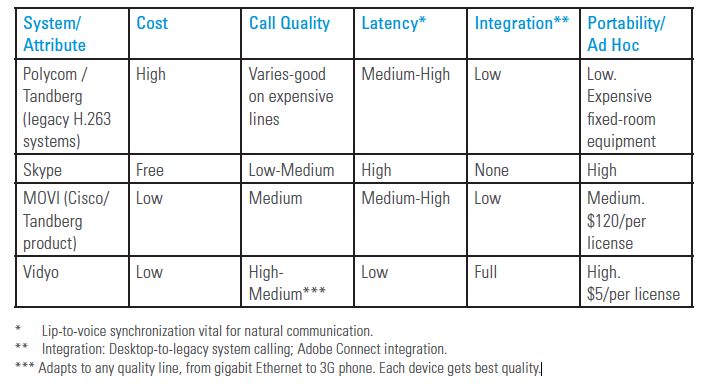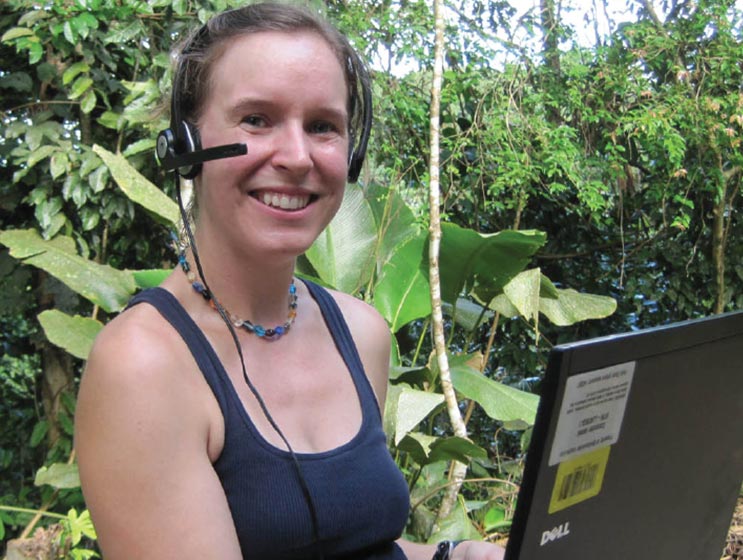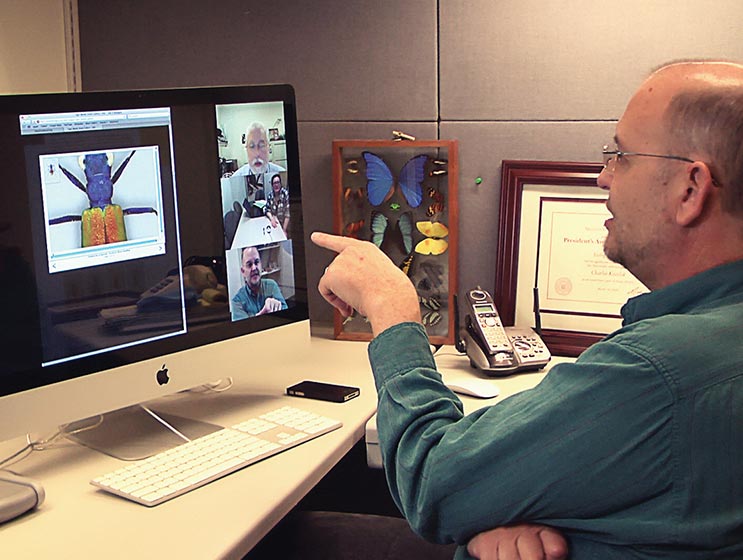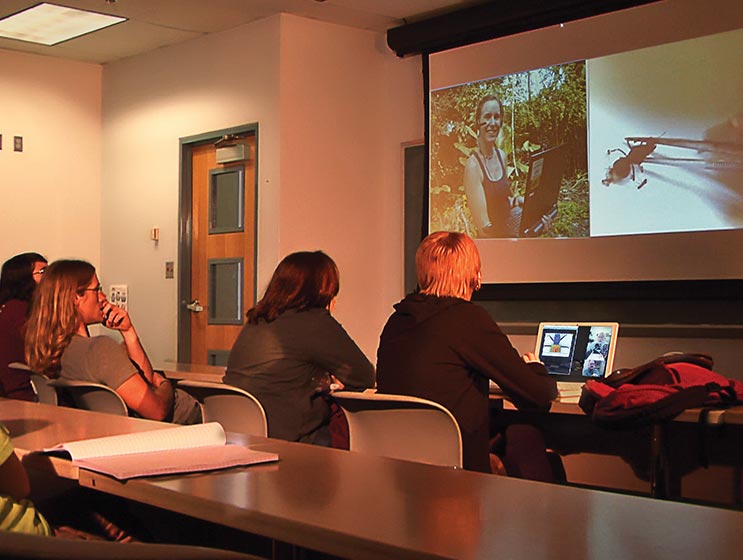
Vidyo connects ASU students and teachers with Smithsonian education and research facility in the jungles of Panama
Vidyo Communications and Collaboration Platform Enables Low-Cost, High-Quality, Multi-Party Exchanges
Established in 2003, incorporating ASU’s Biology, Plant Biology and Microbiology departments, the School of Life Sciences (SOLS) at Arizona State is committed to providing a wide range of experiences for undergraduate and graduate students that build on ASU’s burgeoning role in biotechnical and biomedical research. In keeping with its goal of expanding opportunities for students and faculty, SOLS recently launched a virtual classroom program in which undergraduate and doctoral students at the ASU campus in Arizona see, speak and exchange information face-to-face and in “real time” with staff scientists and researchers at the Smithsonian’s Institute for Tropical Research (STRI) in Panama, and experts at the Smithsonian in Washington, D.C.
STRI is one of the leading research institutions of the world. Its facilities are used extensively by more than 900 visiting scientists from academic and research institutions in the United States and around the world every year whose work focuses on understanding tropical habitats and biological diversity. The School of Life Sciences’ “Current Topics in Tropical Biology” class features “virtual” lectures by STRI and ASU experts, and Smithsonian researchers who are also working with ASU colleagues to mentor students on site in Arizona and in Panama. One important goal of the ASU-STRI collaborative is to promote global educational research and discovery opportunities in the areas of biofuels, social structure, sustainability and species diversity.
enable audio and video interactions between the different sites, ultimately only one solution successfully enabled students, teachers and scientists to engage in high-quality face-to-face exchanges from remote jungle locations. That was Vidyo.
Results
Visiting Scientists
Breaking the Physical Boundaries of Education
Other video communication products that allow point-to-point conferences to be accessed via the Internet were found to be unsuitable because of their low-quality and inability to support multi-party video calls. What sets the Vidyo communications and collaboration platform apart from the rest is its low-cost, high-quality mobility and performance in remote field settings; its ease-of-use – a simple desktop interface; and the number and quality of multiple simultaneous connections.
Charles Kazilek, Director of Technology Integration and Outreach, with ASU’s School of Life Sciences, was responsible for reviewing and selecting the technology for the ASU-STRI program and continues to be the point person for the technology development of this global classroom effort. He works closely with the Smithsonian and STRI to establish and develop a network that extends far beyond the bounds of the university. According to Kazilek, “In choosing the video collaboration solution for the ASU-STRI program, we needed to get the Arizona State University Technology Office (UTO) involved. UTO is the central hub of all technology that is used by the entire university, and they are extremely diligent about the selection of all technology that is used at ASU. I needed to demonstrate to them and to our team at SOLS that our solution could be taken to extreme limits and still work to the standards that we required. We needed to link telepresence to scientists in remote areas … environments that required something very flexible, very portable … something that actually works. We wanted to see how far we could penetrate literally into the jungle and bring back that experience to our students. We wanted to see how far we could push Vidyo. Could we run it on 3G? Can we get it into the jungle? Can we get it into the middle of an island in the middle of the Panama Canal? What we found is – YES we can!”
ASU Assessment of How Vidyo Compares with Other Solutions

The Next Steps: Sharing the Vision
In an effort to extend the reach of the ASU-STRI program so that it can benefit students who would otherwise not have access to such a great resource, the educational experiences that are being created by the ASU-Smithsonian virtual learning sessions are expected to be made available to other schools and learning facilities worldwide. Currently Kazilek, who is also the creator of an ASU online science education website calledAsk a Biologist, is working to expand the lessons developed by the School of Life Sciences into K-12 classrooms. He says, “With the ASU-Vidyo virtual classroom system in place, we can now offer a very affordable program to public schools – and by using the Vidyo system, the only
thing that’s needed is an Internet connection. Vidyo is a fraction of the cost of alternatives and is the only platform that allows us to do this.”
The way Kazilek sums it up: “When we work with Vidyo, I always think about the person who once said ‘you can afford to buy a sailboat, but you can’t afford to own one.’ Well … with Vidyo you can afford to buy that sailboat AND sail it around the world! It’s an inexpensive client that works with any endpoint, virtually anywhere, so whether you have a Mac or a PC … no problem. Exceptional quality, without network, geographical or scalability limitations, for a fraction of the cost. That’s Vidyo.”



Get In Touch With Sales
Learn more about how Vidyo can provide the solution you need.
